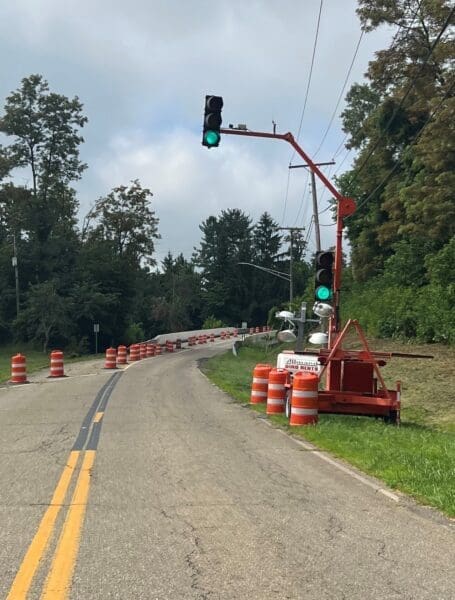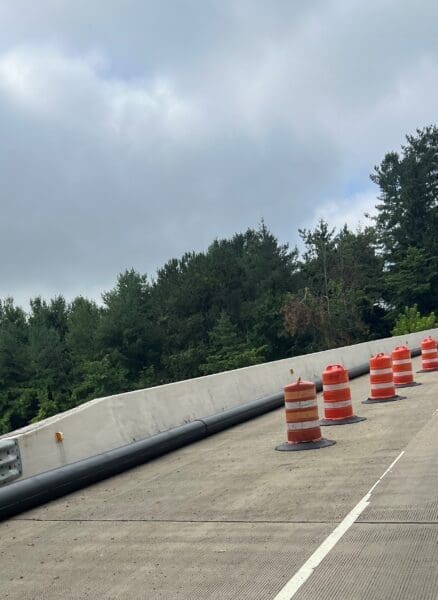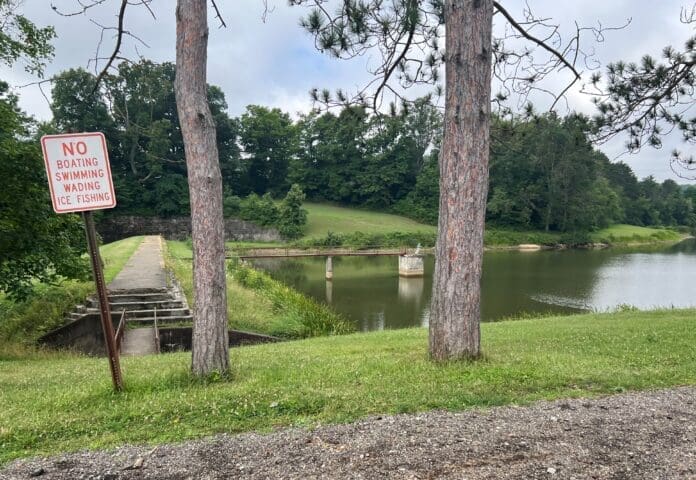Belmont County eventually will supply the City of St. Clairsville and its residents with clean, drinkable water. That is the plan and has been so since council voted its approval back in 2020.
That vote capped a lengthy debate about which entity, from the city itself, to Aqua Ohio, Belmont County, and even the City of Martins Ferry, would be supplying the county seat with water. The who in this case was answered when council voiced its approval to link up and purchase from the county.
That answered the who. The next obvious question–the when? That’s still up in the air.
Back in February an important step was taken when the East End connector along U.S. 40 was installed, linking the county water system with city lines. It was an important step, but only one in an increasingly apparent large number of steps to get from Point A to B in this project.
Issues have arisen, from material shortages and supply costs, to other unexpected complications, such as the need to run a new temporary line under Interstate 70.
That line become necessity when city workers discovered a major leakage issues with the main line coming from the water plant back in August of 2021.
A temporary, above-ground line was run and is still in use. The new permanent line installation should have kicked off. But the Ohio Department of Transportation’s resurfacing project put a delay on that project.
Once ODOT is finished, then work can commence on getting that permanent main line installed.
There’s also the city’s distribution project to consider. St. Clairsville received $5 million in grant funding for running new water lines in the city. That too has been on hold.
“We’re hoping to get the distribution project bid out next month, toward the middle or end of the month,” said Jeremy Greenwood, the Service Director for St. Clairsville. “We still have the I-70 water line coming across, and we’re waiting on ODOT to complete a paving project and then get in there and get to work on that.
“Plus, we’re still in ongoing negotiations with the county.”
Those negotiations are more “i” dotting and “t” crossing. This changeover is happening.


The When
Greenwood didn’t have an exact date the changeover will take place. There are still a lot of moving parts, from both the city and county, along with ODOT.
As of now, however, September is a hopeful time to get the changeover rolling as that’s the new extended deadline time granted by the Ohio Environmental Protection Agency.
EPA findings got this entire water changeover ball rolling, and, up until recently, the city had until May of 2022 to make the changeover happen. When it became apparent that was no longer a possibility, the city sought and was granted another extension.
“We’ve been on the phone with (the EPA) and at several meetings and apprised them of the situation,” Greenwood said. “We did ask for an extension because it was supposed to be over in May, but the county wasn’t ready. The new deadline was September and we’re waiting to see what happens.”
The county is running into similar issues that the city is, namely, supply problems.
Belmont County is in the midst of its own multi-million dollar water system upgrade, including the new water treatment plant, new lines, and a pump station on Little McMahon Creek Road which will replace the current station near the Richland Township garage.
Supplies and resources are an ongoing issue.
“We’re adapting and adjusting. There are certain supplies and parts that are available, some aren’t,” Greenwood admitted. “We’re kind of adapting and adjusting. We were supposed to have a mini excavator come in this month, but now it’s back-ordered for another two months.”
For the city’s part, it’s $5 million distribution project should be bid out here shortly. Given supply issues and time frames, the work itself may not begin until 2023.
“That’s the problem we’ve run into is the lead time for materials and availability,” Greenwood admitted. “We’re going to get it bid out to the contractor and cut them loose to start ordering and stockpiling.
“They will probably not break ground until spring.”
Project Not Necessary for County Connection
There are a number of 4-inch lines in the city that will be replaced as part of the distribution project. These 4-inch lines supply a number of the fire hydrants you will find throughout the city. However, these lines were deemed insufficient in supplying the hydrants enough water flow.
Greenwood noted upgrading to 6-inch lines will improve the water pressure, as well as increase volume in those lines. It also will make the hydrants certifiable and compliant for use by the fire department.
That’s one of the major benefits to the distribution project, one of many positives on the way for water inside St. Clairsville. There’s a lot still to do and even more coming down the pike afterward because of the changeover.
“We have a lot of irons in the fire right now,” Greenwood said. “There’s a step here, and another there, and all of these little pieces and parts, they feel separate, but are interconnected and part of the entire system.”
Sadly for residents in one troubled part of town, one of those little steps isn’t fixing their drainage and flooding issues.
When the city received grant funding for the distribution project, it actually filed three grant applications—the $5 million for the distribution project, the $700,000-800,000 for the I-70 line project, and $2.5 million for Bellview.
Greenwood admitted while the city was pleasant surprised to see its most expensive grant approved, it was hoping for approval on the Bellview grant application to provide the residents in that neighborhood just north of downtown some relief.
He noted that the grant money received is not eligible to be used for the Bellview issue as that issue is caused primarily by drainage and storm sewer problems, not waterlines.
Future of the Reservoir
Once the changeover finally takes place, the city can start decommissioning the reservoir from its water system. The facility will not be used as a back-up as the surface water reservoir and underground sourced water provided by the county don’t mix well together when used in conjunction.
The reservoir will not be drained, however, but will still remain a popular fishing location for local anglers, along with some potential additional uses.
“We’re looking to maintain the one reservoir as an area for recreation,” Greenwood said. “There’s obviously fishing, but we’re also discussed potentially having boating and other things.”
Greenwood noted discussions have taken place about extending the city’s popular bike trail down to around the reservoir, increasing access and potential use with the possibility of the trail running the length of the reservoir.


